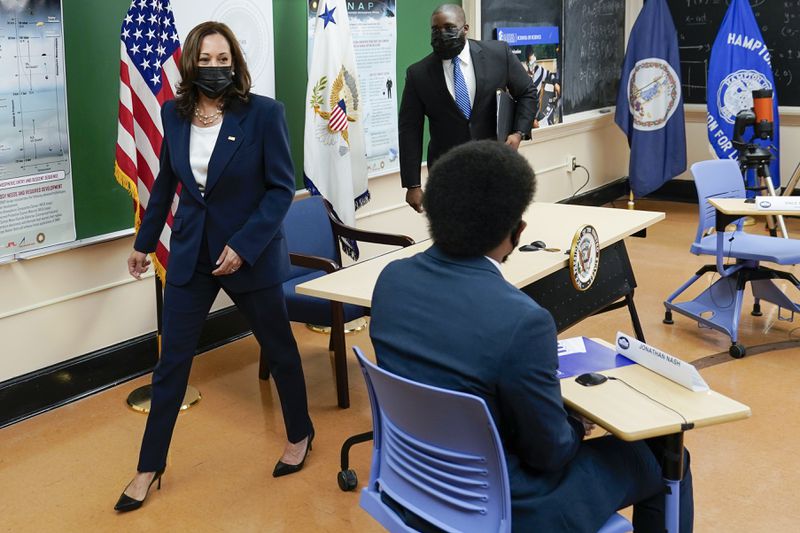Written by Hampton University Newsroom,
U.S. Vice President Kamala Harris visited Hampton University on Friday, September 10 to tour its four NASA-funded satellite mission projects, including the $140 million Aeronomy of Ice in the Mesosphere (A.I.M.) mission, the first only NASA mission totally controlled by an HBCU.
“It was an honor for Hampton University to host the Vice President of the United States, Kamala Harris at Hampton University,” said Dr. William R. Harvey, Hampton University President. “There’s no one in this region who has what we have. Many people are not aware of the research that Hampton conducts in STEM disciplines. I’m glad the vice president and her staff understand.”
The Vice Presidents also led a roundtable discussion with select students. They discussed the importance of HBCUs and minorities in STEM fields, noting how their contributions impact the future success of our nation’s workforce. The discussion was a part of the 2021 National HBCU Week.
“You all are the leaders in this new era. In particular, our nation and our world will require smart people such as you to lead on issues that require dedication and development of skills around science, technology, engineering, and math. Hampton University is one of the leaders in STEM research, and I say that as a Howard graduate, knowing as Vice President about what you’re doing here at Hampton University. I know about the partnership between Hampton and NASA. I know about the fact that there are four satellites because of Hampton, that are right now, orbiting, giving us valuable information that allows us not only to predict but to analyze, what is happening in our world and in the atmosphere. This is extraordinary work that is happening, and I’m here to say as Vice President of the United States that our HBCUs are some of the great leaders in this vital work that must happen in the new era and in the world. I am very happy to be here,” said Vice President of the United States of America, Kamala Harris.
Hampton University’s Atmospheric and Planetary Sciences (APS) department has been involved in NASA missions since its founding in 1996. Hampton University scientists are involved in four active missions observing the Earth as well as two future missions to Jupiter and its moons, one in partnership with NASA and one in partnership with ESA. The university is also involved in a future joint mission with South Korea (PolCube). Hampton University has complete operational responsibility for the Aeronomy of Ice in the Mesosphere (AIM) mission, led by Dr. James Russell, which is now heading into its 15th year in orbit. This makes Hampton the only HBCU to have ever held such responsibility for NASA. The APS researchers have also contributed to or led instrument development for SABER, CALIOP, and SAGEIII-ISS, all of which are currently operating as part of NASA missions.
During her tour of Turner Hall, the Vice President met with members of Hampton University’s Atmospheric and Planetary Sciences department faculty: Drs. James Russell, III; M. Pat McCormick, Kunio M. Sayanagi and William B. Moore. The faculty informed the Vice President about the research that has been in progress at Hampton University for over the last 20 years. That research includes Lidar, which is used to study atmospheric properties. The university operates a large telescope that allows our system to reach into the stratosphere to study the temperature, pressure, and humidity of the atmosphere. Our observatory houses two telescopes and one scanning lidar system that measure aerosols, clouds, humidity, and certain trace gases such as ozone as well as observe the planets Venus, Jupiter, and Saturn. Hampton is also home to the Severe Weather Research Center which produces rapid, accurate forecasts of fast-developing weather systems, such as hurricanes and tornadoes.





